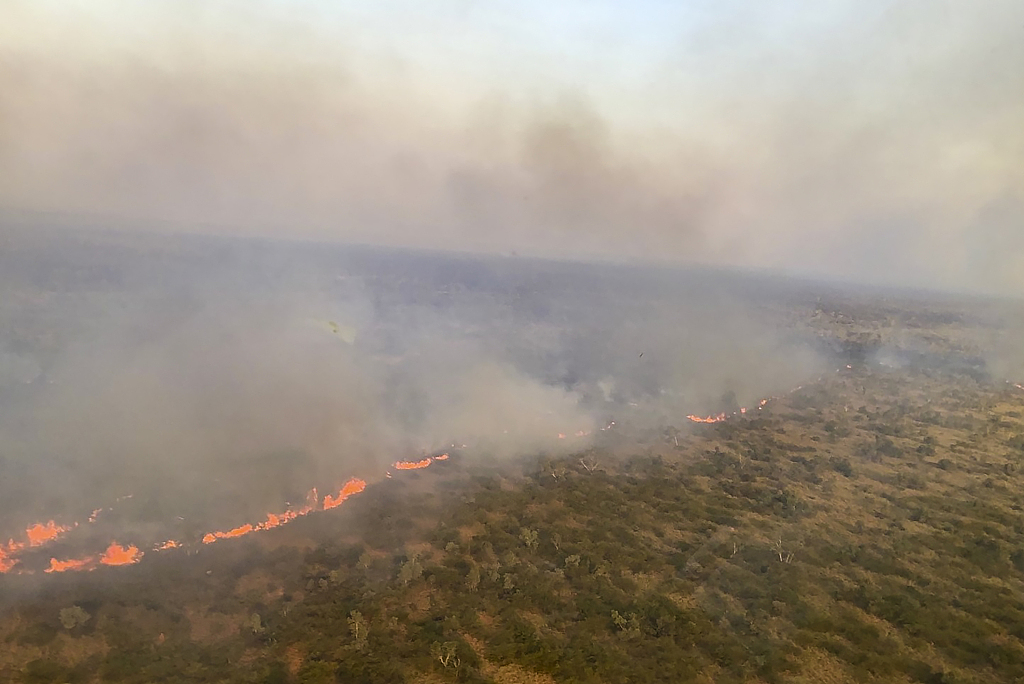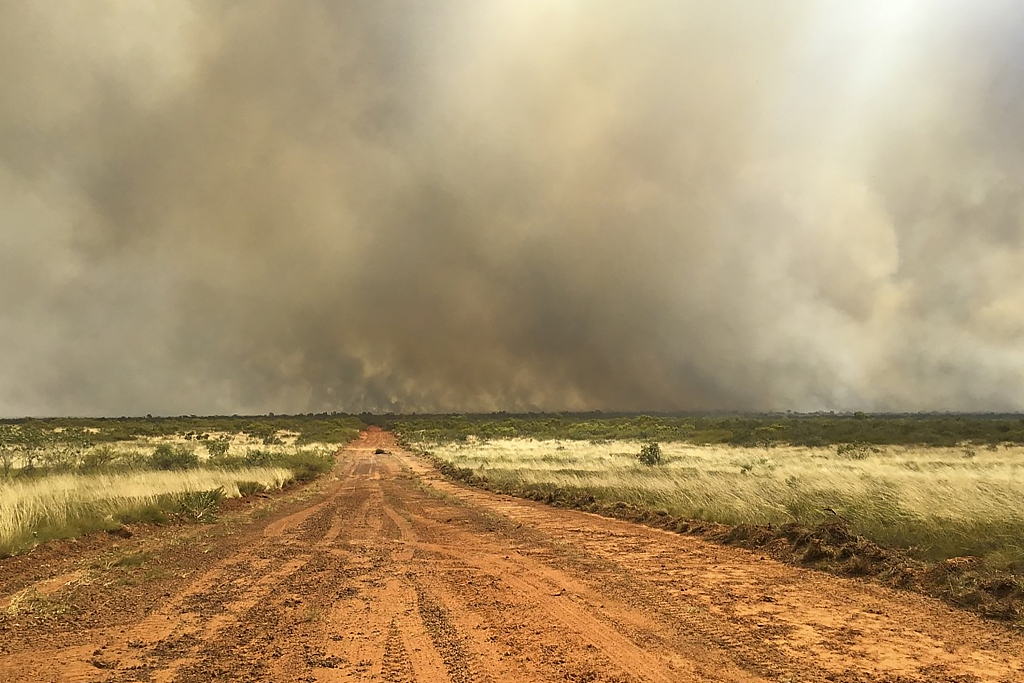
The Sydney Opera House is seen shrouded by smoke on September 13, 2023. /CFP
The Sydney Opera House is seen shrouded by smoke on September 13, 2023. /CFP
The Australian Bureau of Meteorology on Tuesday declared an El Nino event for the country, a weather pattern that typically brings hotter, drier conditions.
Authorities have issued high fire danger ratings to many locations, warning that high winds might whip up bushfires and urging homeowners to reduce fire risks at their homes.
According to the research published in Nature Communications by Josep G. Canadell, a chief research scientist from Commonwealth Scientific and Industrial Research Organisation and his team, the fire season is expanding and shifting from spring and summer into the cooler months of the year. These changes are nearly exclusively the result of Australia's increasingly extreme fire weather, and they are consistent with expected human-caused climate change.
Researchers indicated that fires are increasing exponentially at a rate of 14 percent each year in the milder months of March to August, which means more extreme fire years and longer fire seasons have arrived.
Their study found that Australia's forests saw an average annual increase in burned area of 350 percent between the first (1988-2001) and second (2002-2018) halves of the record, and an increase of 800 percent when 2019 is taken into account.

A large bushfire burns in the Outback of Australia near Tennant Creek in the Northern Territory, Wednesday, Sept. 13, 2023. /CFP
A large bushfire burns in the Outback of Australia near Tennant Creek in the Northern Territory, Wednesday, Sept. 13, 2023. /CFP
In order to determine the causal relationship between climate change and fire activity, researchers looked at trends in nine wildfire risk indicators and indices that are related to fuel loading, fire weather, intense fire behavior and ignition. These trends, along with the burned area, help them make this determination.
They concluded that the fundamental driver of the expanding areas burned by fire is Australia's more severe fire weather, which will worsen as greenhouse gas emissions rise.
The probability of fire weather is also increasing. More arid atmospheric conditions can result in the development of pyrocumulonimbus clouds, which are thunderstorms caused by fire.
In addition to this, materials such as fallen leaves, bark, twigs, grasses and shrubs can provide fuel for bushfires, and there are also human causes, such as burning and smoking, which can cause bushfires.
Byrne and his colleagues from the United States, Australia, and New Zealand investigated the impact of drought and wildfires on the Australian ecosystem during the 2019-2020 bushfire season.
They conducted the study using satellite measurements, which monitor the quantities of carbon dioxide and other greenhouse gases in the atmosphere. According to their study, bushfires more than doubled Australia's annual carbon footprint.
The report identifies numerous issues that experts are becoming increasingly concerned about, including climate change and natural ecosystems. Some regions of the Earth may release more and more carbon into the atmosphere as they warm, dry up, and burn more easily. That might hasten the process of global warming even further.

A large bushfire burns in the Outback of Australia near Tennant Creek in the Northern Territory, Wednesday, Sept. 13, 2023. /CFP
A large bushfire burns in the Outback of Australia near Tennant Creek in the Northern Territory, Wednesday, Sept. 13, 2023. /CFP
According to David Lindenmayer, a professor from the Fenner School of Environment and Society, Australian National University, people must work to keep wildfires to a minimum. The obvious solution is to adopt more aggressive measures to combat climate change. Even if mankind manages to address this massive global issue, it will be a long time before we see visible changes in climate conditions.
Managing vegetation to lower flammability is one of the more immediate solutions. For instance, logging and forest thinning can make forests more flammable, so these activities should be stopped in these delicate ecosystems.
Kevin Tolhurst AM is a honorary associate professor from Fire Ecology and Management at the University of Melbourne. He told The Conversation that Australia will soon see a recurrence of destructive bushfires. The likelihood of another El Nio should intensify efforts to establish a more thoughtful and long-term fire management strategy.
(If you have specific expertise and want to contribute, or if you have a topic of interest that you'd like to share with us, please email us at nature@cgtn.com.)